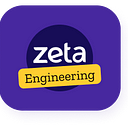Supercharge your Monitoring: Migrate from Prometheus to VictoriaMetrics for Scalability and Speed — Part 1

*This subject is split into 3 blogs
Introduction
Prometheus, a widely adopted open-source monitoring and alerting toolkit, is crafted for reliability, scalability, and simplicity. Despite its widespread use and numerous advantages, it is not exempt from challenges. This document will delineate some of the significant issues linked with Prometheus and the obstacles they present.
I. Monolithic Architecture
A core challenge in Prometheus stems from its monolithic architecture, where all elements are intricately woven into a unified software package. Within this monolithic framework, a singular application manages the tasks of scraping, ingestion, and metric storage. Although this approach streamlines the setup and initial utilization, it introduces various issues outlined below:
1. Single Point of Failure
The monolithic structure of Prometheus exposes it to the risk of a single point of failure. When the Prometheus server is not accessible, monitoring and alerting functions halt. In a monitoring environment emphasizing high availability, any period of downtime can incur significant costs, jeopardizing the capability to promptly address critical events.
II. Lack of Native Clustering
Prometheus lacks native support for clustering or high availability. Consequently, establishing a high-availability (HA) environment for Prometheus necessitates the deployment of two or more identical Prometheus instances configured identically. Although this strategy aids in alleviating the risk of a single point of failure to a certain degree, it brings forth additional complexities: as explained below,
1. Vertical Scalability Only
Due to Prometheus’s absence of inherent clustering, the only viable scaling method is vertical, accomplished by augmenting resources on a single instance. However, this strategy is not without limitations, as a practical threshold exists for how extensively a singular Prometheus instance can scale. Should Prometheus deplete resources or encounter its constraints, the consequence may be unresponsiveness or improper functionality. This limitation could lead to elevated computing expenses, consequently inflating cloud costs.
2. OOM Kill Cascading
Running multiple identical Prometheus instances introduces an extra difficulty as they frequently collect data from the same sources concurrently. If one Prometheus pod experiences a resource-intensive problem, such as an Out of Memory (OOM) kill, the other replicas may also be affected. This sets the stage for a cascading failure scenario, where a singular issue can swiftly disrupt all instances. This underscores the complexities associated with achieving high availability.
III. Slow Restarts Due to WAL Replay
Prometheus encounters a delay during restarts when a Prometheus pod is rebooted. This sluggishness stems mainly from utilizing the Write-Ahead Log (WAL) replay mechanism in Prometheus. Throughout WAL replay, Prometheus refrains from scraping new data, leading to noteworthy consequences: as explained below,
1. Lack of Real-Time Monitoring
While undergoing WAL replay, Prometheus refrains from scraping or incorporating fresh data, resulting in the absence of real-time monitoring. This absence of up-to-the-minute data can be pivotal during a restart, impeding your capacity to identify and address issues or incidents promptly.
2. Limited Alerting Capabilities
Devoid of real-time data, alerting mechanisms lose efficacy. This may result in overlooked alerts or delayed responses to crucial events, posing a potential impact on system reliability and user experience.
3. Retention Period
Beyond the issues mentioned earlier, another significant challenge encountered with Prometheus revolves around data retention periods. Opting for an extended retention duration, surpassing 7 days, may result in challenges related to resource consumption. The following outlines the reasons behind this concern:
3.1. Increased CPU and RAM Demands
Extending the data retention period in Prometheus results in a notable escalation in the volume of historical data to be stored and queried. This heightened demand exerts increased pressure on both CPU and RAM resources. Prolonged retention durations necessitate Prometheus to consistently handle the indexing, querying, and serving of an expanding dataset, contributing to a potential strain on system resources.
Conclusion
While Prometheus stands out as a robust monitoring and alerting solution, it grapples with notable challenges stemming from its monolithic design, absence of built-in clustering, and prolonged restarts caused by Write-Ahead Log (WAL) replay. These hurdles impact the tool’s reliability, scalability, and real-time monitoring capabilities. Mitigating these challenges might necessitate users to explore options such as architectural adjustments, adopting clustering solutions, or considering alternative monitoring tools. The choice among these approaches should be guided by the specific use cases and requirements of the users. A thorough understanding of these limitations becomes imperative for making well-informed decisions when incorporating Prometheus into a comprehensive monitoring and alerting strategy.
Authors:
Vijesh Nair → linkedin.com/in/vijesh-nair-b651a2a1
Ritesh Sanjay →linkedin.com/in/riteshsanjaymahajan
Reviewers:
Shashidhar Soppin→ linkedin.com/in/shashidhar-soppin-8264282
Praveen Irrinki → linkedin.com/in/pirrinki
Shaik Idris →linkedin.com/in/shaikidris
